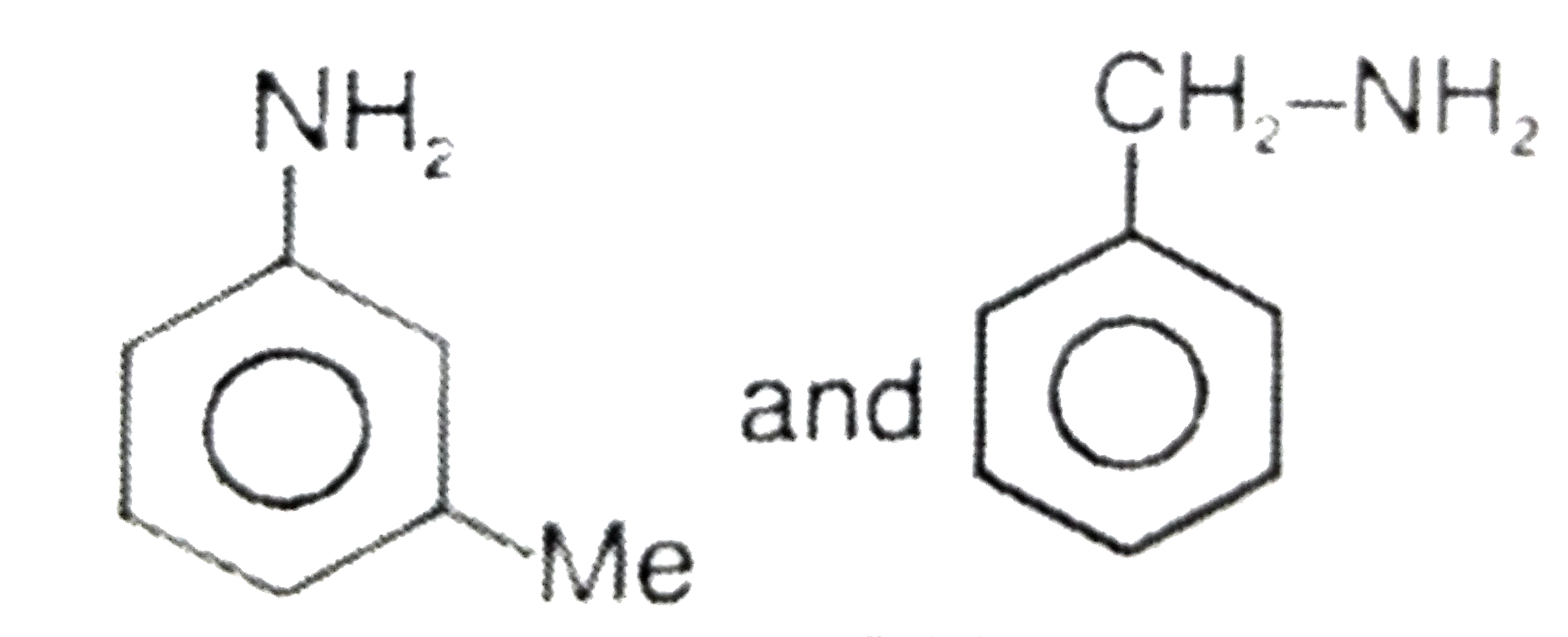Methanol can be distinguished from ethanol by the following except :
Reaction with iodine and alkali
Reaction with salicylic acid and H2SO4
Reaction with Lucas reagent
Boiling point
The correct Answer is:C
To solve the question "Methanol can be distinguished from ethanol by the following except:", we will analyze the reactions mentioned and determine which one does not allow for the differentiation between methanol and ethanol.
1. Understand the Question: We need to identify which of the given reactions does NOT distinguish between methanol (CH3OH) and ethanol (C2H5OH).
2. Analyze the First Reaction - Iodine and Alkali:
- Methanol does not undergo the iodiform reaction, while ethanol does.
- Ethanol reacts with iodine in the presence of alkali to produce methyl ketone (acetone), whereas methanol does not produce any such product.
- Conclusion: This reaction can distinguish between methanol and ethanol.
3. Analyze the Second Reaction - Salicylic Acid and Sulfuric Acid:
- When methanol reacts with salicylic acid in the presence of sulfuric acid, it forms methyl salicylate, which has a characteristic smell (oil of wintergreen).
- Ethanol also reacts to form the same product but does not have the same smell.
- Conclusion: This reaction can also distinguish between methanol and ethanol.
4. Analyze the Third Reaction - Lucas Reagent:
- Lucas reagent is used to differentiate between primary, secondary, and tertiary alcohols.
- Both methanol and ethanol are primary alcohols, and when treated with Lucas reagent, neither will react at room temperature, resulting in no precipitate.
- Conclusion: This reaction cannot distinguish between methanol and ethanol.
5. Analyze the Fourth Reaction - Boiling Point:
- The boiling point of methanol is 65°C, while that of ethanol is 78°C.
- By measuring the boiling point, one can easily distinguish between the two.
- Conclusion: This method can distinguish between methanol and ethanol.
6. Final Answer:
- The reaction that does NOT distinguish methanol from ethanol is the reaction with Lucas reagent.
Summary:
The answer to the question is the reaction with Lucas reagent, as both methanol and ethanol are primary alcohols and do not react with it at room temperature.
- Methanol does not undergo the iodiform reaction, while ethanol does.
- Ethanol reacts with iodine in the presence of alkali to produce methyl ketone (acetone), whereas methanol does not produce any such product.
- Conclusion: This reaction can distinguish between methanol and ethanol.
- When methanol reacts with salicylic acid in the presence of sulfuric acid, it forms methyl salicylate, which has a characteristic smell (oil of wintergreen).
- Ethanol also reacts to form the same product but does not have the same smell.
- Conclusion: This reaction can also distinguish between methanol and ethanol.
- Lucas reagent is used to differentiate between primary, secondary, and tertiary alcohols.
- Both methanol and ethanol are primary alcohols, and when treated with Lucas reagent, neither will react at room temperature, resulting in no precipitate.
- Conclusion: This reaction cannot distinguish between methanol and ethanol.
- The boiling point of methanol is 65°C, while that of ethanol is 78°C.
- By measuring the boiling point, one can easily distinguish between the two.
- Conclusion: This method can distinguish between methanol and ethanol.
- The reaction that does NOT distinguish methanol from ethanol is the reaction with Lucas reagent.
The answer to the question is the reaction with Lucas reagent, as both methanol and ethanol are primary alcohols and do not react with it at room temperature.
Topper's Solved these Questions
- ALCOHOLS, PHENOLS & ETHERSBOOK - VMC MODULES ENGLISHCHAPTER - ALCOHOLS, PHENOLS & ETHERSEXERCISE - Impeccable
100 Videos
- ALCOHOLS, PHENOLS & ETHERSBOOK - VMC MODULES ENGLISHCHAPTER - ALCOHOLS, PHENOLS & ETHERSEXERCISE - Enable
100 Videos
- ALCOHOLS, PHENOLS & ETHERS BOOK - VMC MODULES ENGLISHCHAPTER - ALCOHOLS, PHENOLS & ETHERS EXERCISE - IN-CHAPTER EXERCISE - L
10 Videos
- ALDEHYDES,KETONES & CARBOXYLIC ACIDS BOOK - VMC MODULES ENGLISHCHAPTER - ALDEHYDES,KETONES & CARBOXYLIC ACIDS EXERCISE - IN-CHAPTER EXERCISE-M
10 Videos
Similar Questions
Knowledge Check
 can be distinguished byAI2+NaOHBNaSO3HCNaCN/HClD2,4-DNP
can be distinguished byAI2+NaOHBNaSO3HCNaCN/HClD2,4-DNP
Phenol can be distinguished from ethanol by the following reagents except
View SolutionPhenol can be distinguished from ethanol by the following reagents except
View SolutionPhenols can be distinguished from alcohols by
View SolutionMale Frog can be distinguished from female by
View SolutionA monocot can be distinguished from a dicot by :-
View SolutionMethanol and ethanol can be distinguished by
View SolutionAniline can be distinguished from methyl amine by its reaction with
View Solution

 can be distinguish by
can be distinguish by